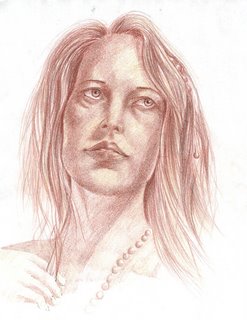
Mark Meyer says,
A talent or skill for drawing is not really inherited or divinely inspired; it is acquired like most other skills (driving and typing) by learning, practice, and experience.No matter what you think of your overall artistic abilities, you can learn to draw what you see and improve your drawing skills throughout your life. Once you acquire the basic techniques for drawing accurately and properly, you can use those tools creatively to develop an individual artistic vision to express or represent your unique viewof things. In reality, most any art form you may employ (painting, sculpting, installation) ultimately is based on drawing and compositional skills.
Drawing has been with us at least since early humans drew pictograms on cave walls, and remains a vital mode of artistic expression today, constantly evolving.Although we usually think of drawing as a way of portraying what we see accurately and realistically, it can certainly also depict imaginary, abstract, and emotional realms that cannot be normally “seen”, and so can range widely between the objective and subjective levels of our world-views.By learning the basic techniques of drawing, and through hard work and persistence, we can become better able to artistically explore and express how we envision things in unique ways.
I remember drawing and colouring as a favourite activity as a child. Crayons, pencils, paints were hoarded in my room and paper a prized possesion. No one in my immediate family was an artist, though my father did have some artistic talent and interest but never pursued it directly. A great aunt I am told used to draw well, but none of her drawings are still in existance that I know of and she is dead now,with family living in the USA, who I don't know very well.
Does technology weaken drawing skills?
Students are more comfortable manipulating computer graphics than doodling, drafting and drawing with pen on paper, and this has created a sharp decline in drawing skills in recent years, teachers say.
Additionally, tech-savvy students simply lack the initiative and persistence developed by drawing, resulting in uninspired work--at least work on paper.
"I see an increasing passivity on the part of students," says Marc Treib, a University of California, Berkeley architecture professor who hosted a recent conference on the state of drawing in an electronic age.
The Mechanics of Drawing looks at the technical aspect of drawing through art instruction.
A certain amount of drawing is mechanical in nature; that is, it is done more on the conscious level, and even in the left, or analytical, side of the brain. Therefore, this part is a little easier and faster to learn, because it consists of practical, more easily comprehended steps. And it involves manual dexterity, eye/hand coordination, and simple practice; and is more objective, less subjective. It comes in handy for those who are interested mainly in accurate depictions of people and objects - likeness, correct proportions, and other quantitative measurements.
The drawing here is a draft of a portrait to be completed for a class. The draft gives me a chance to experiment on inexpensive paper and get a feel for how the pencils handle and to correct mistakes and recognize the plan I need for the main drawing that I will complete on Stonehenge paper. I strongly believe that drawing skills are latent in everyone. They just need to be brought to the surface, encouraged and used constantly to be effective.
Technorat tags: art, drawing, drawing skills, derwent drawing pencils

3 comments:
Dear Jeanette,
Thanks for the lesson in drawing. I feel like I've been to school and we are NEVER too old to learn are we! The problem is we live in an instant society and we want everything NOW without having to work or study for it.The name of the game is perseverance and priorities!
I agree that anyone can learn to draw, but there are some that have an easier time picking it up than others, much like any skill. Drawing develops muscle memory too, much like musicians develop as they learn to play. They form notes a certain way, as do artists form lines a certain way.
As a relatively young artist myself, I've felt the desire to learn some of the digital media out there. The buck stops at Corel Painter. After half a lifetime of learning to handle brushes, pencils and sticks, I cannot bring myself to open up a digital program designed to emulate those media but with none of the inflection and touch I'd cultivated for 15 years. Those youngins' though, they learn fast.
I disagree that learning to draw in digital erodes drawing skill as a whole. The eye and coordination still needs to develop. You just don't get the "Undo" button. Commitment in some media is daunting to a digital artist. I think the loss of risk-taking is the greatest loss. But maybe the ability to work past the fear is also lost.
I once had an artist friend say to me, "I don't get how you can do that without an undo button."
Jeanette,
Thank you for sharing your drawings. I enjoy seeing your creations.
In response to your post, I believe that it is true, that many skills can be learned with training and perserverance, however, the one thing that cannot be taught is creativity. This is the difference between skill, and talent, in my humble opinion. Creatives simply have a knack for applying their learned skills in a novel way.
Post a Comment